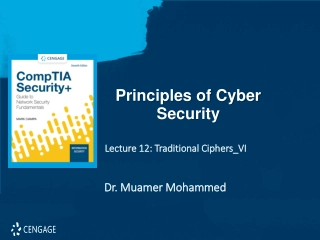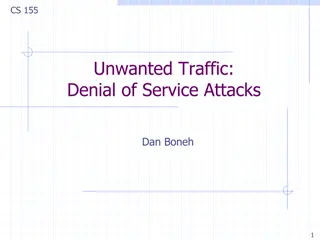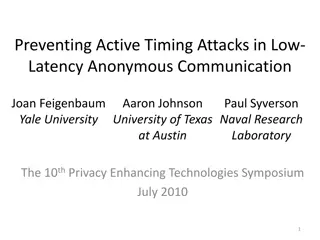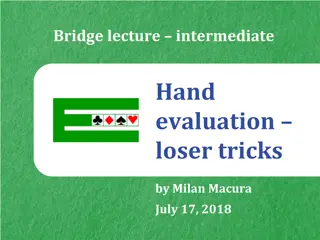Hedging Against Sore Loser Attacks in Cross-Chain Transactions
This presentation explores techniques for mitigating the risks associated with volatile prices and walk-aways in cross-chain transactions. It proposes solutions such as standard cryptography, synchronous blockchains, hashed timelock contracts, and brokered transactions to address these challenges effectively. The discussion delves into the role of premiums, auctions, smart contracts, and N-party leaders in enhancing transaction security and efficiency.
Uploaded on Feb 17, 2025 | 0 Views
Download Presentation

Please find below an Image/Link to download the presentation.
The content on the website is provided AS IS for your information and personal use only. It may not be sold, licensed, or shared on other websites without obtaining consent from the author.If you encounter any issues during the download, it is possible that the publisher has removed the file from their server.
You are allowed to download the files provided on this website for personal or commercial use, subject to the condition that they are used lawfully. All files are the property of their respective owners.
The content on the website is provided AS IS for your information and personal use only. It may not be sold, licensed, or shared on other websites without obtaining consent from the author.
E N D
Presentation Transcript
Hedging Against Sore Loser Attacks in Cross-Chain Transactions Authors: Yingjie Xue, Maurice Herlihy Presented by: JT Raber
Cross-chain Transactions One type of asset for another Escrow Smart contracts
Problem Volatile prices Walk-aways
Proposal Standard cryptography Synchronous blockchain Hashed timelock contracts Two-party N-party Brokered transactions Auctions
Two-party Premiums in case of walk-away Possibly bootstrapped
N-party Leaders Directed graph
Brokered transactions Middle man
Auctions Only auctioneer pays premiums Secrets on a per bidder basis
Thoughts Good to have safety Smart contracts are an interesting topic Possibly more uses for them in single-chain applications?























